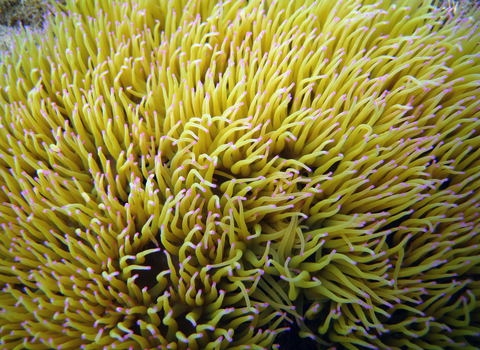
Snakelocks Anemone ©Julie Hatcher
Snakelocks anemone
It's easy to see where the snakelocks anemone got its name when you spot its flowing tentacles. But be careful when out rockpooling, those tentacles give a nasty sting!
Scientific name
Anemonia viridisWhen to see
January to DecemberTop facts
Category
Stats
Diameter: up to 8cm with tentacles up to 15cm longCommon
